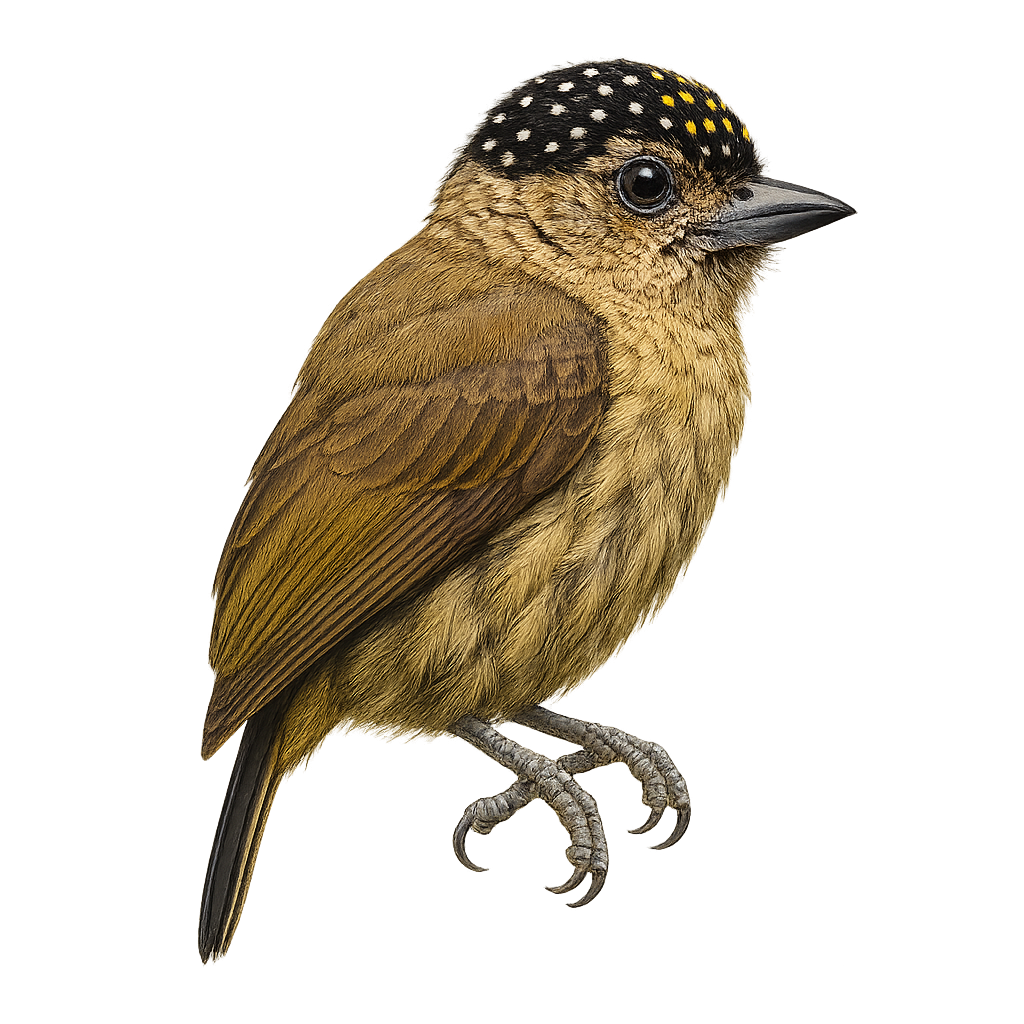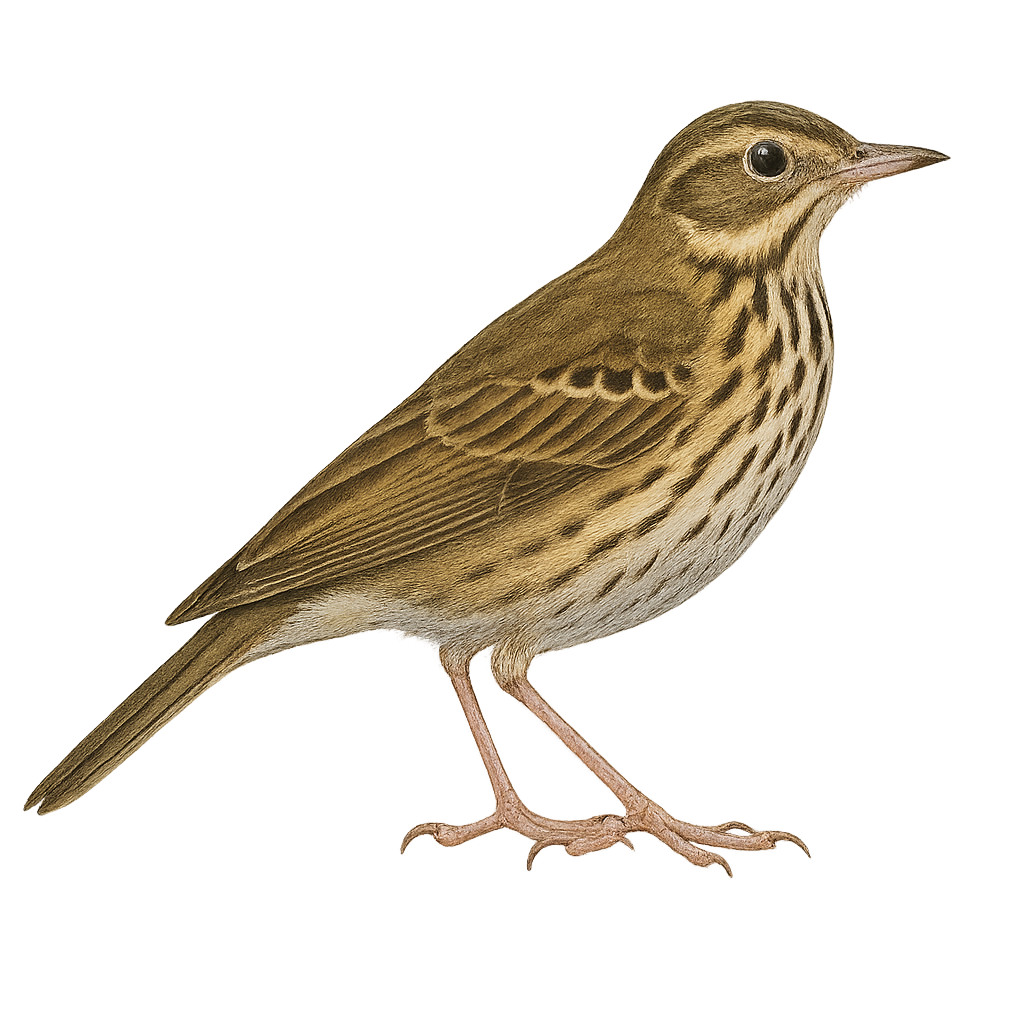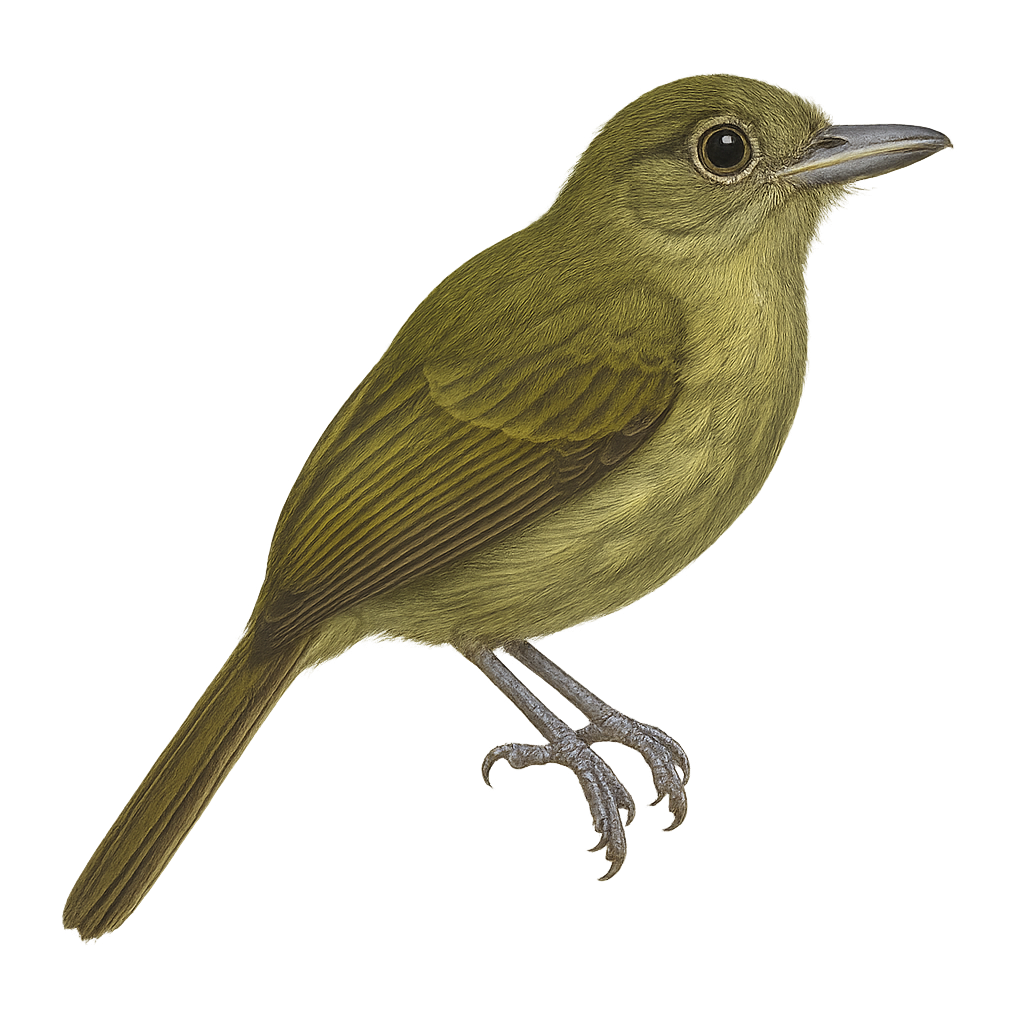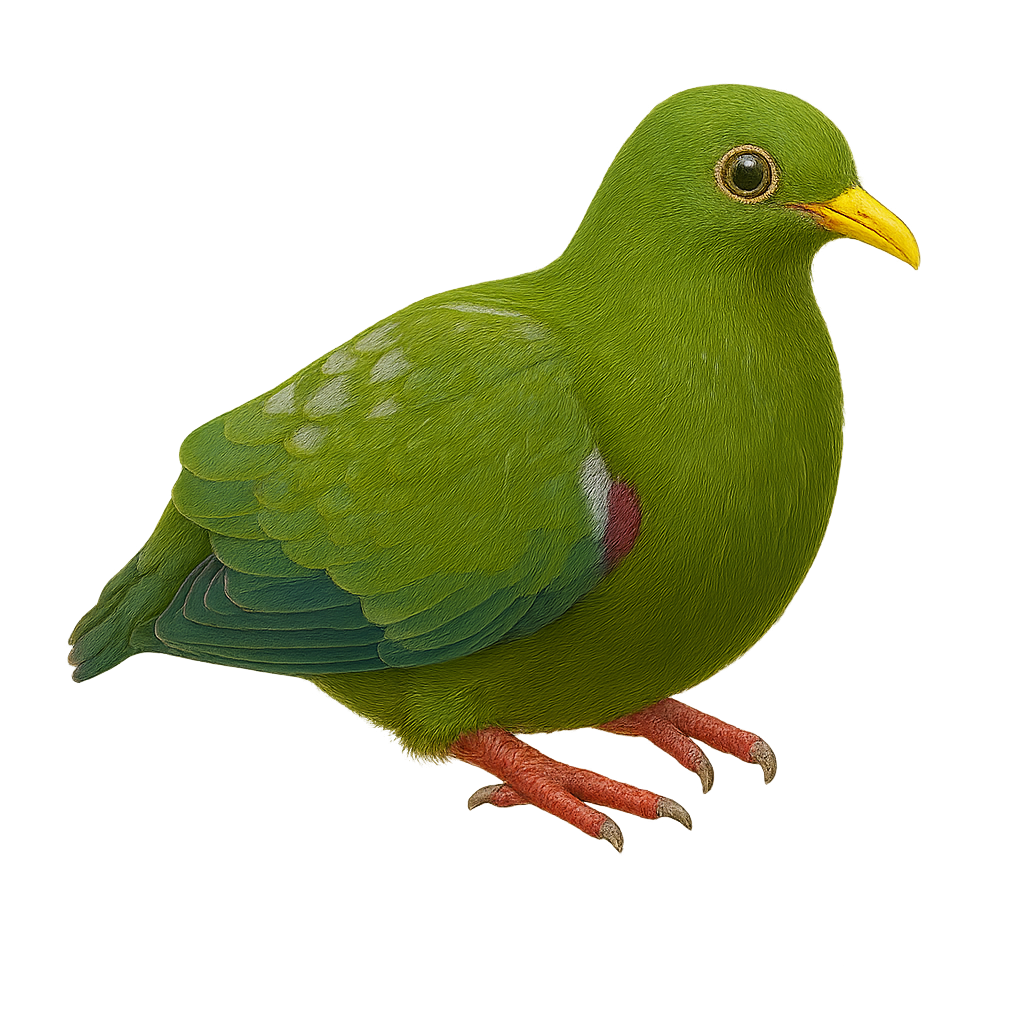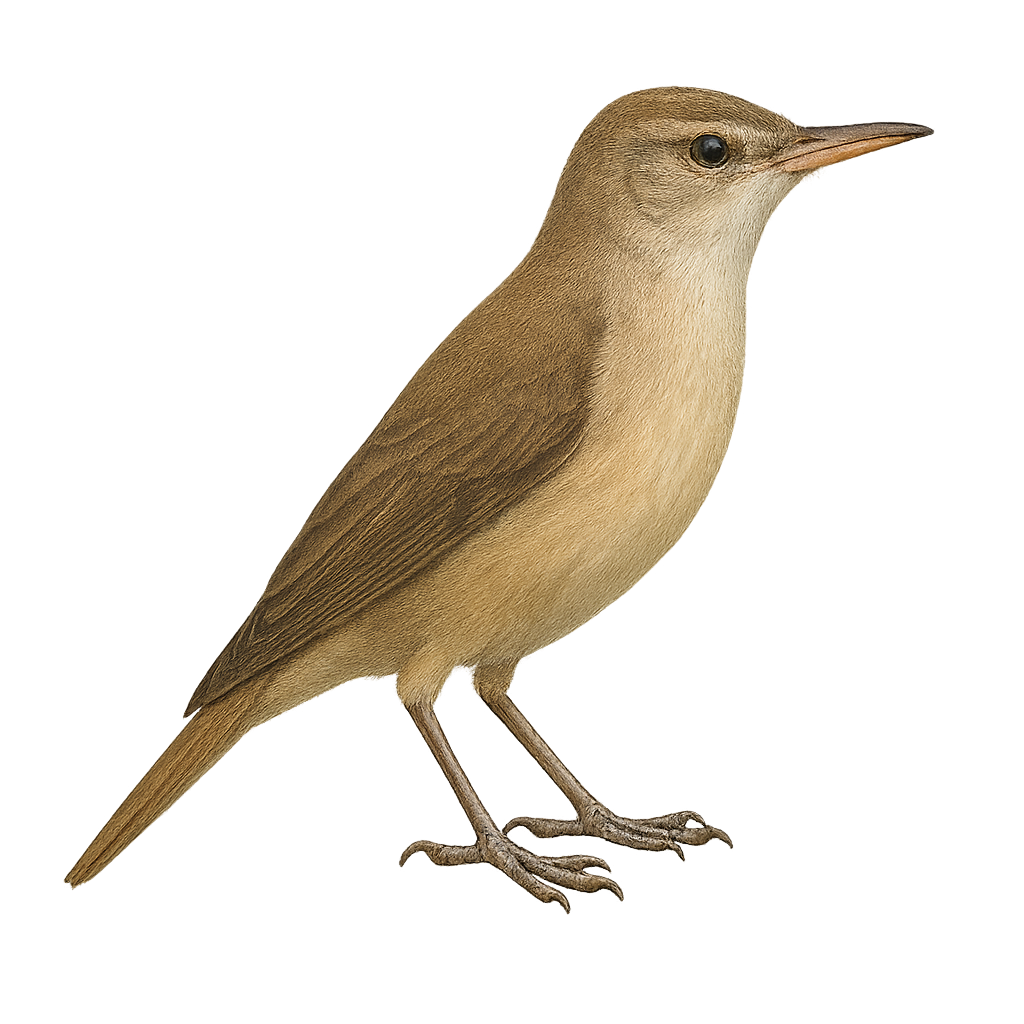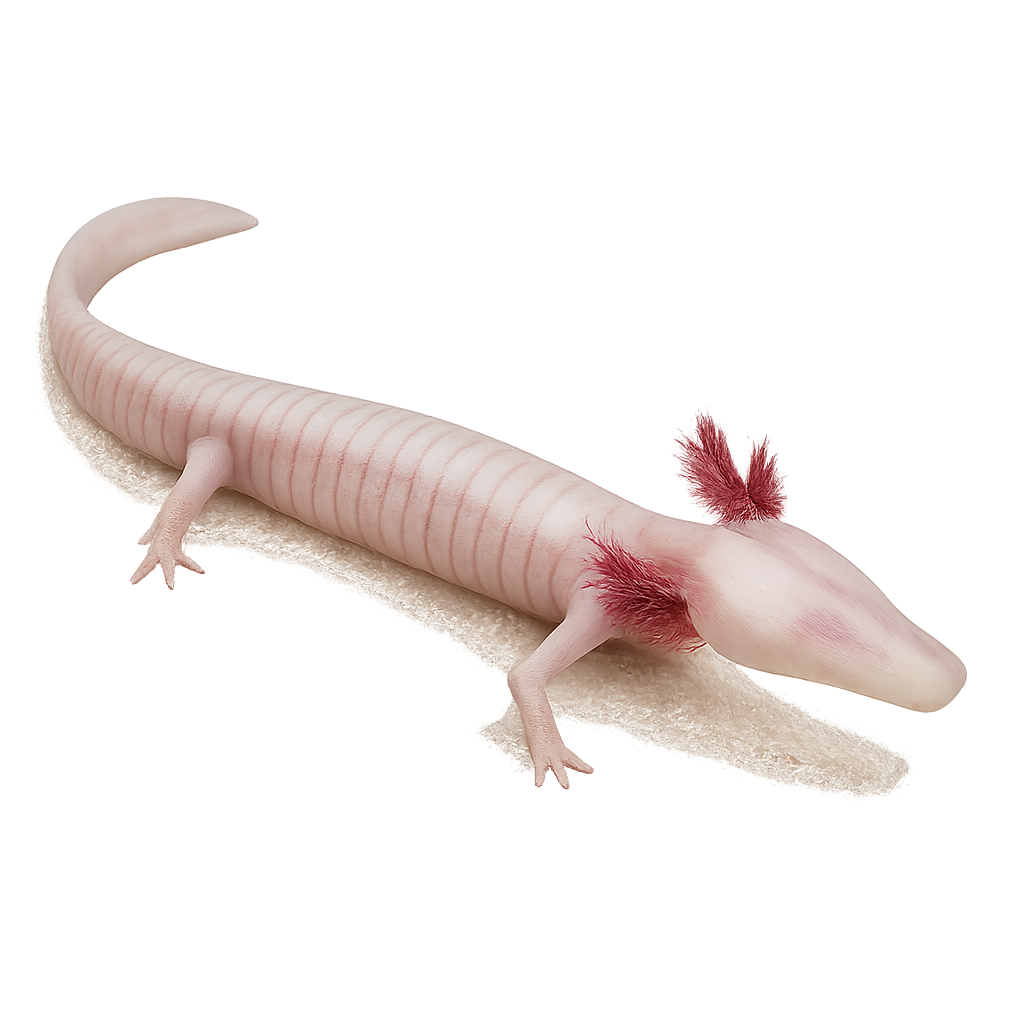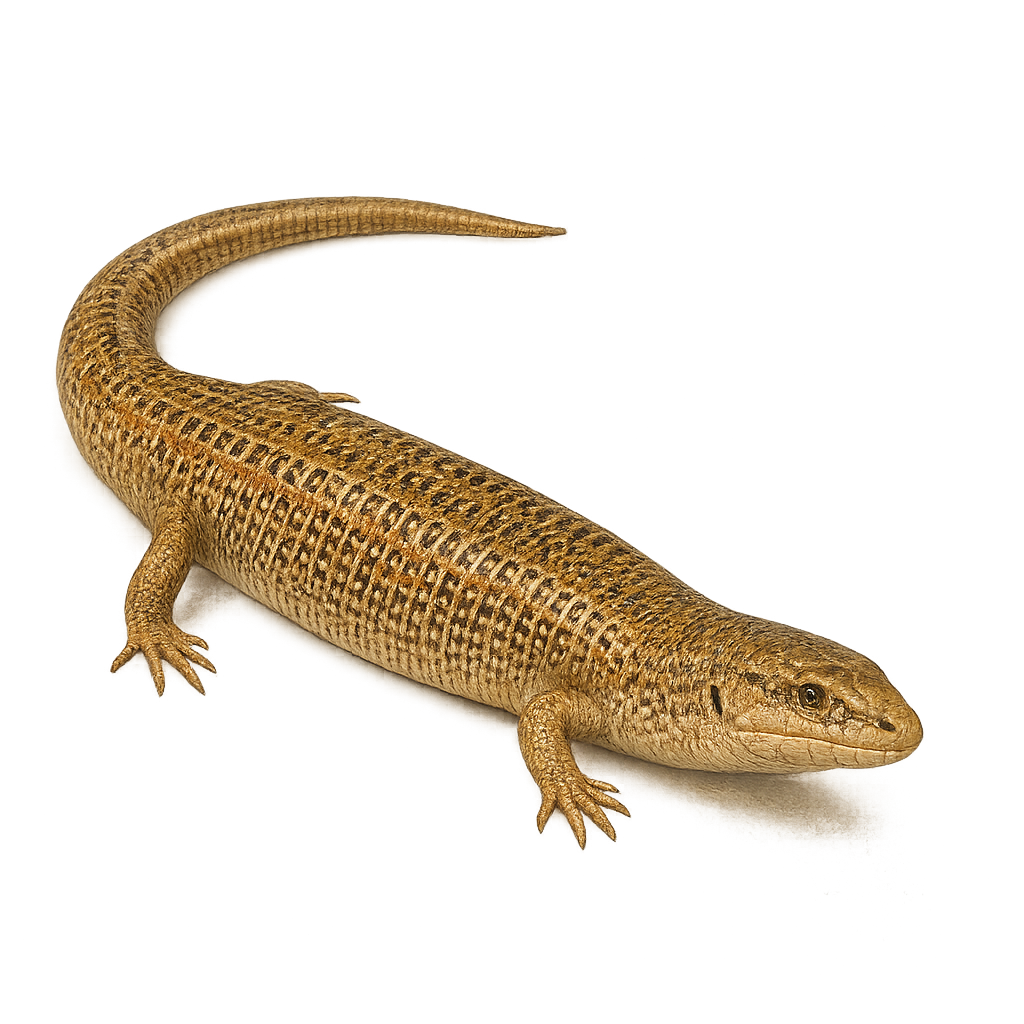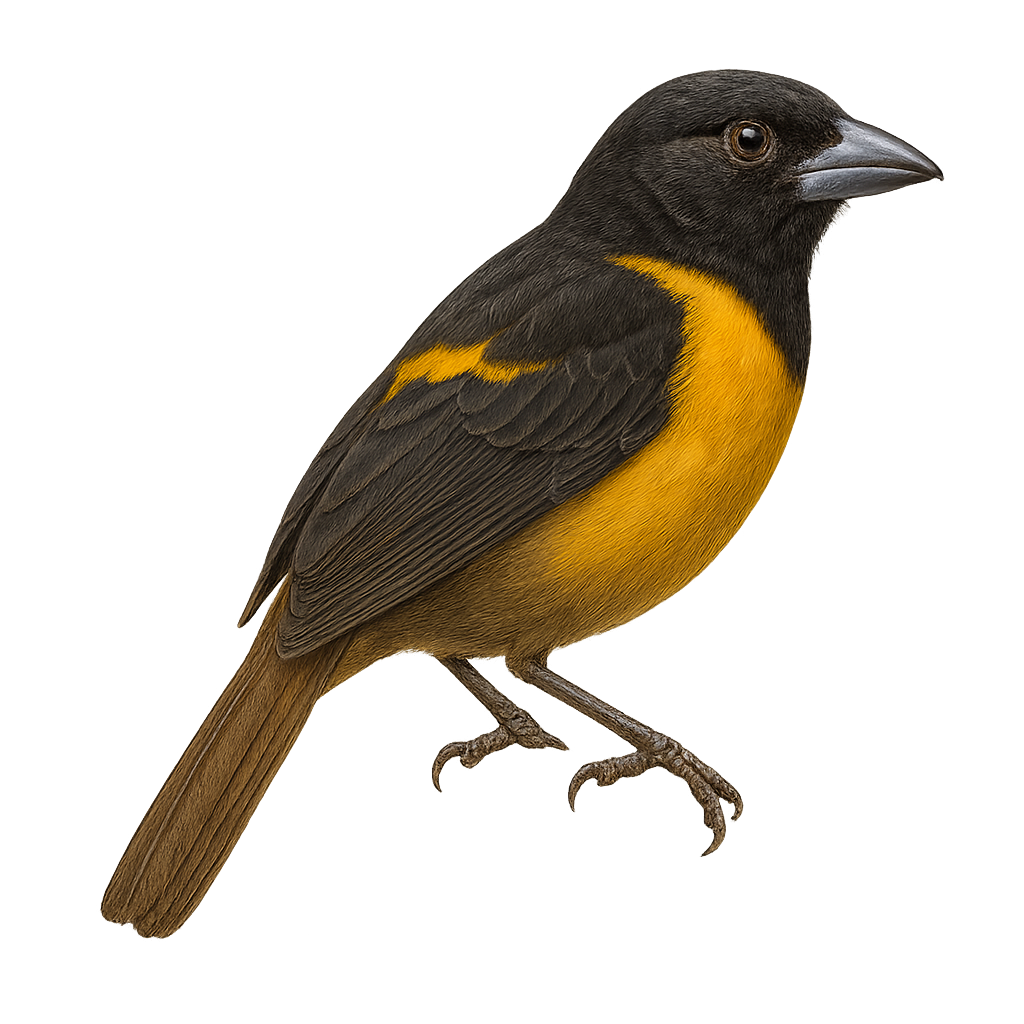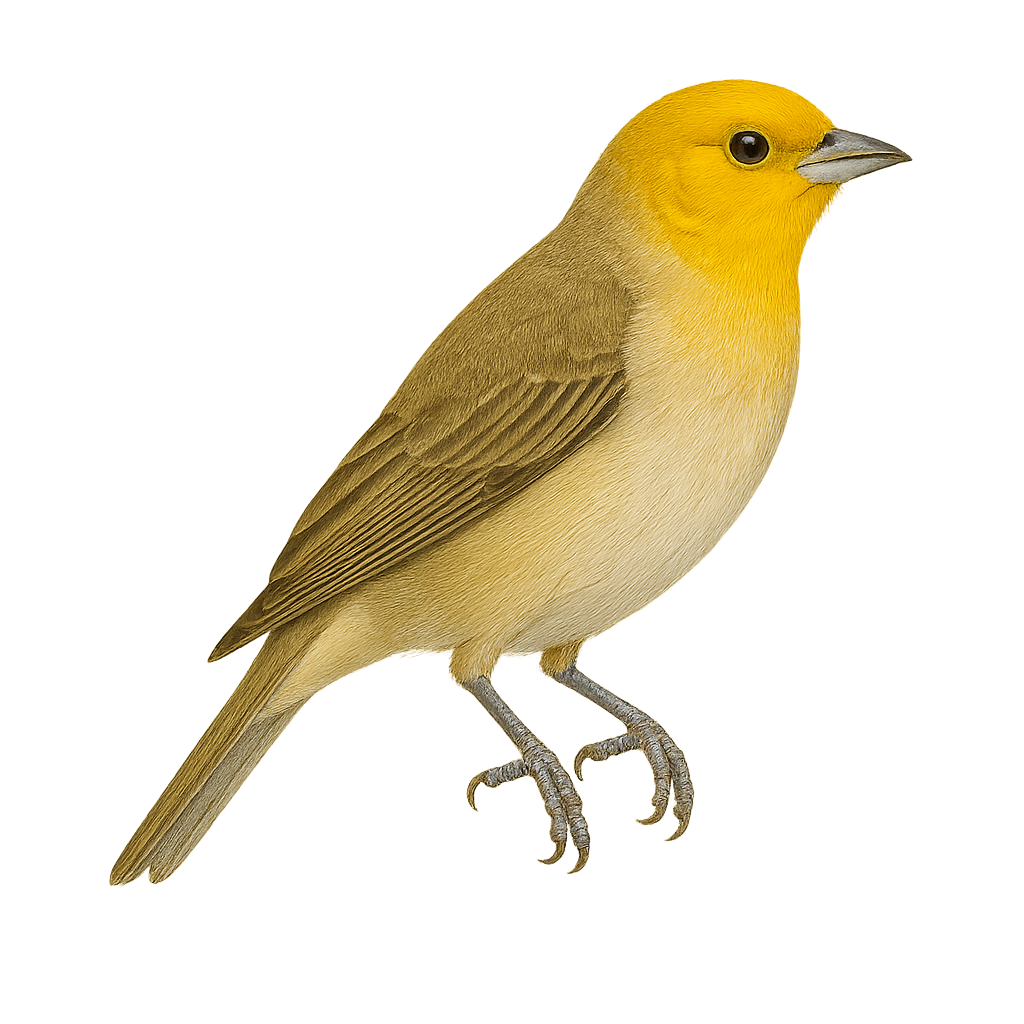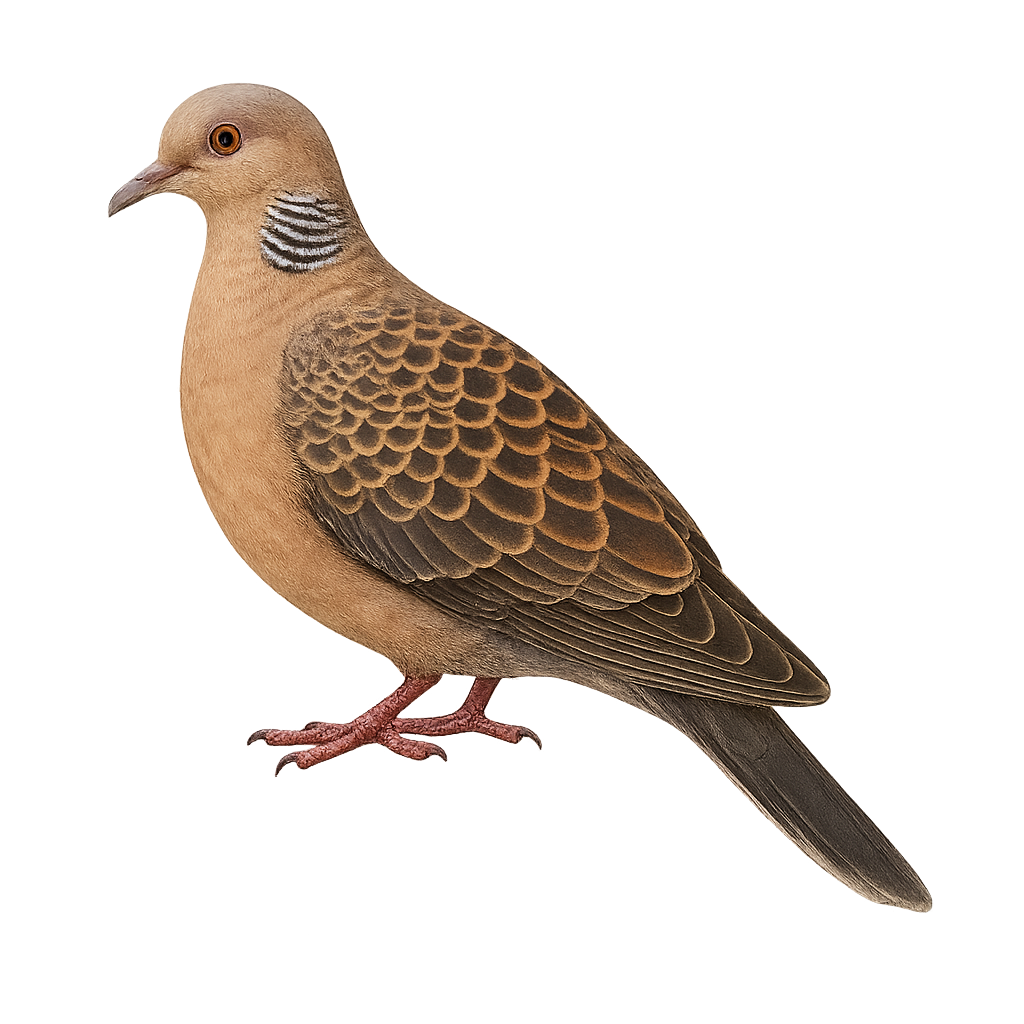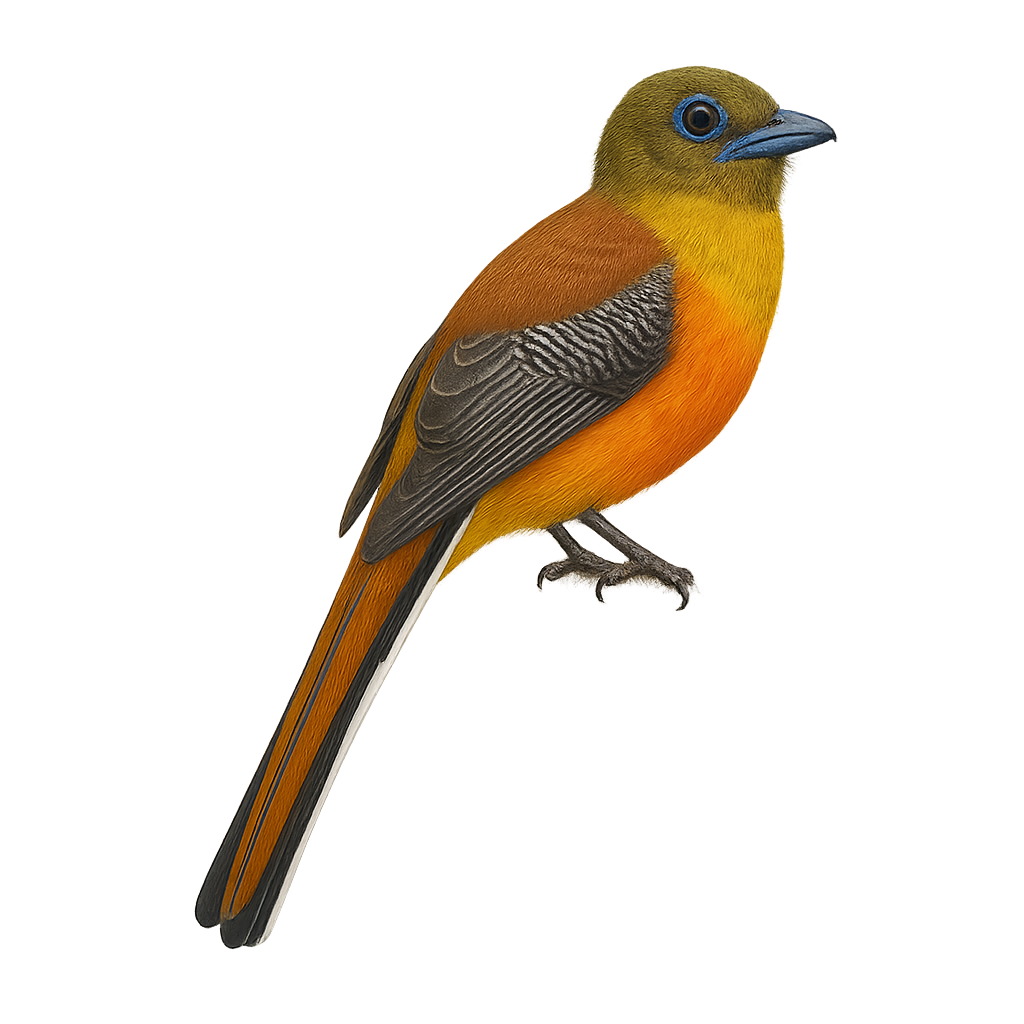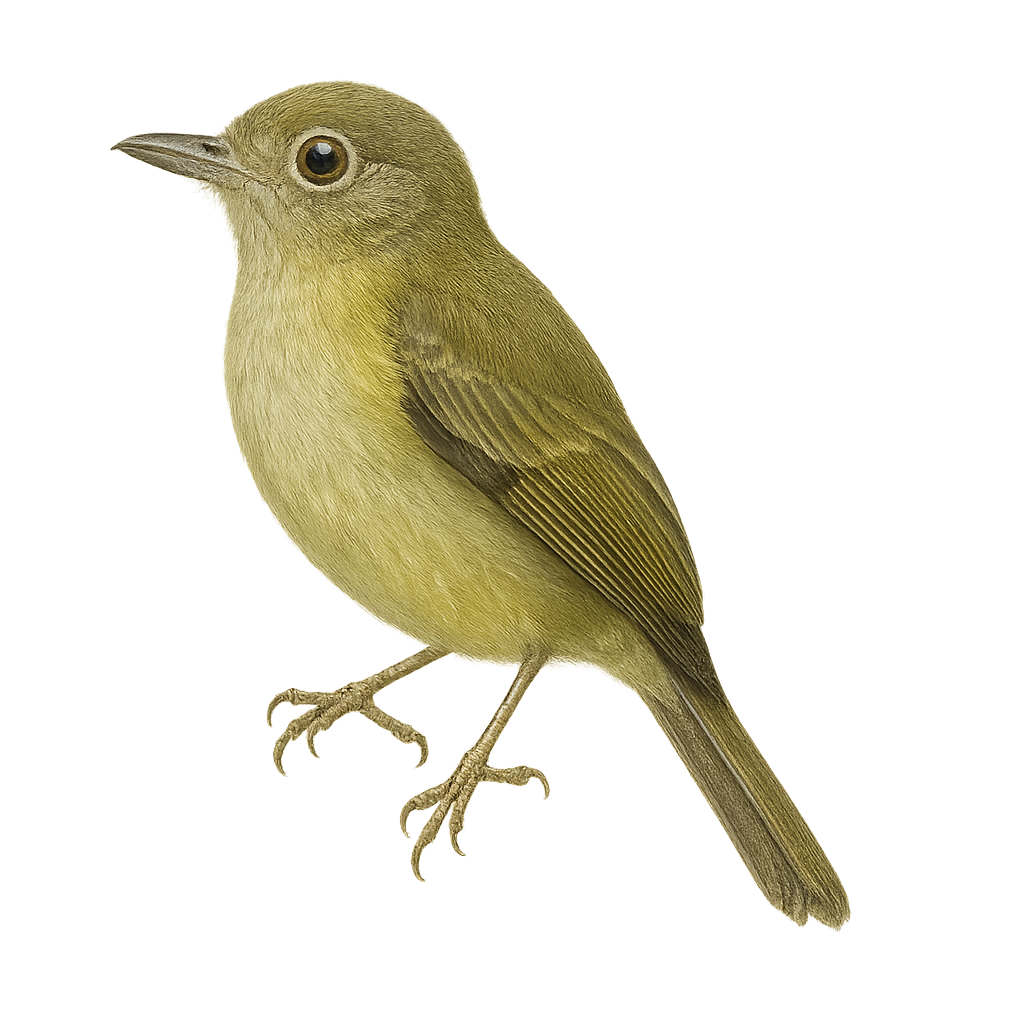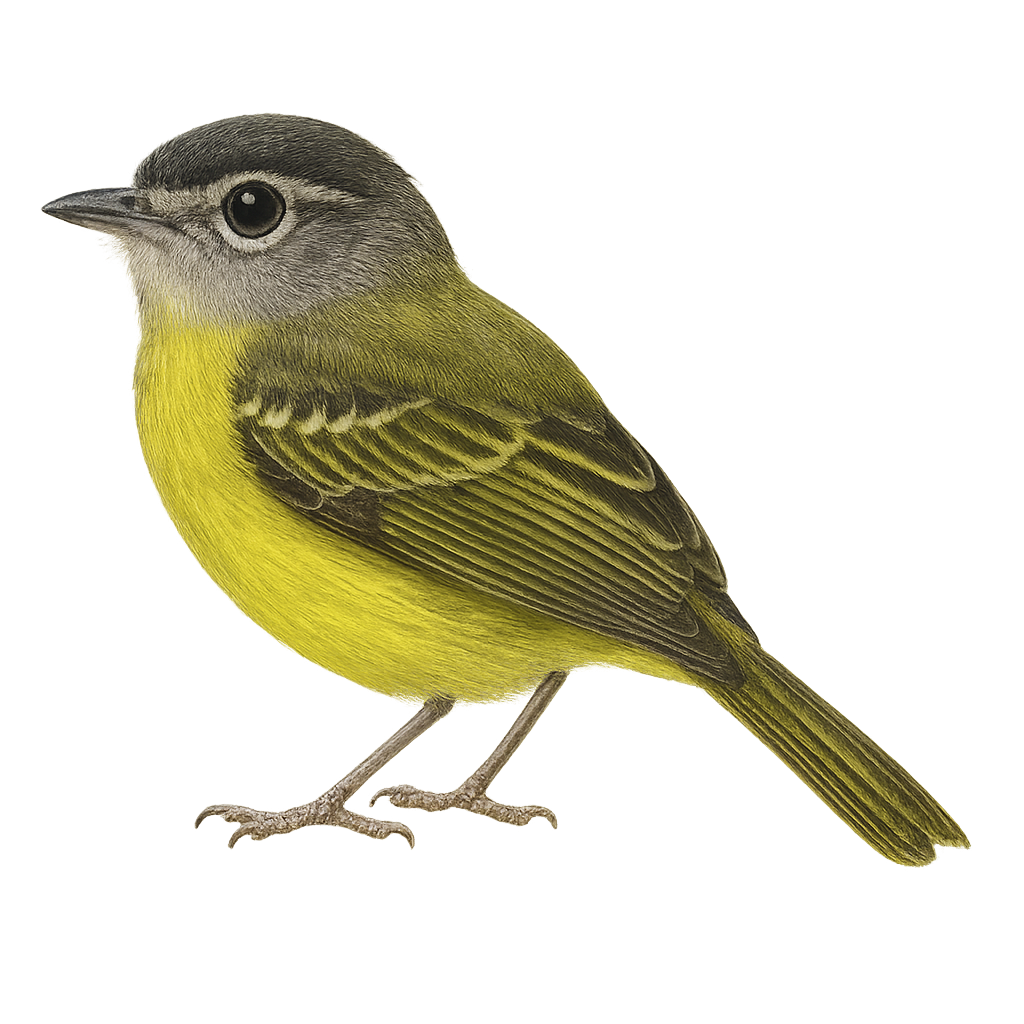The Olivaceous Piculet is a small bird from the Picidae family, identifiable by its olive-green plumage and diminutive size, measuring about 10 cm in length. It primarily inhabits the tropical rainforests of South America, particularly in Colombia, Venezuela, and Ecuador. Its short, sturdy beak is adapted for pecking tree bark in search of insects. The male is distinguished by a small red patch on its head, which is absent in females. This piculet is often seen in small groups or pairs, actively moving through foliage in search of food. Although relatively common in its habitat, it remains discreet and hard to spot due to its coloration blending into the dense foliage.
The Olive-backed Pipit, or Anthus hodgsoni, is a small passerine bird in the Motacillidae family. It is primarily found in wooded regions of Asia, including Siberia, China, and the Himalayas. This pipit is characterized by its olive-brown back and dark streaks on its breast, which help it blend into its forested habitat. A migratory bird, it winters in Southeast Asia. Its song is a key identification feature, often described as a melodious whistle. It primarily feeds on insects and small invertebrates found on the ground. The Olive-backed Pipit is a discreet bird, often difficult to spot due to its elusive behavior and cryptic plumage.
The Piprites chloris, or Olive-green Tyrannulet, is a small, colorful bird found in the tropical forests of South America. It is recognizable by its olive-green plumage and slightly lighter head. This passerine is known for its discreet behavior and ability to blend into dense foliage. It primarily feeds on insects and fruits, which it captures with agility thanks to its quick and precise movements. The Olive-green Tyrannulet is often observed in small groups, although it can also be solitary. Its breeding season varies by region but is generally active during the rainy season when food is plentiful.
The Olivaceous Flatbill, or Rhynchocyclus olivaceus, is a small bird belonging to the Tyrannidae family. It is primarily found in the humid forests of Central and South America, where it is recognized by its olive-green plumage and flattened bill. This discreet bird is often seen alone or in pairs, feeding on insects caught in flight or on leaves. Its song is a soft whistle, often heard at dawn and dusk. Although its habitat is threatened by deforestation, it remains relatively common in protected areas. Its ability to blend into the foliage makes it difficult to spot, but its presence is often revealed by its distinctive song.
The Orange-bellied Fruit Dove, or Ptilinopus iozonus, is a colorful and fascinating bird primarily found in the rainforests of New Guinea and surrounding islands. This medium-sized pigeon, measuring about 24 cm in length, is easily recognizable by its vibrant plumage. Its bright orange belly contrasts with the vivid green of its wings and back, while its head displays shades of gray and violet. It primarily feeds on fruits, playing a crucial role in seed dispersal. Although often seen alone or in small groups, its discreet behavior sometimes makes it difficult to spot. Its ability to blend into dense foliage is impressive, making it a challenge for birdwatchers and photographers.
The Litoria xanthomera, or Orange-thighed Frog, is a tree-dwelling frog species endemic to Australia, primarily found in the tropical regions of northeastern Queensland. It is characterized by its smooth skin and bright green color, often dotted with yellow spots, which gives it its name. Typically measuring between 4 and 6 cm in length, this frog is nocturnal and commonly found in humid rainforests near water bodies. It is known for its distinctive call, used to attract mates during the rainy season. Although its population is stable, it is sensitive to environmental changes and habitat loss.
The Oriental Reed Warbler, Acrocephalus orientalis, is a medium-sized bird belonging to the Acrocephalidae family. It is primarily found in Asia, particularly in eastern Russia, China, and Japan. This migratory bird is known for its long journeys to Southeast Asia during the winter. Its plumage is generally olive-brown on the top and lighter underneath, allowing it to blend into the reeds and marshes it frequents. The Oriental Reed Warbler feeds mainly on insects and small invertebrates, which it captures in dense foliage. Its song is melodious and varied, often heard in spring and summer.
The Proteus anguinus, commonly known as the olm, is a fascinating amphibian inhabiting the karst caves of the Dinaric region in Europe. This curious animal is adapted to underground life, with depigmented skin and atrophied eyes, rendering its vision almost nonexistent. It typically measures between 20 and 30 centimeters in length and has an elongated, eel-like body with reduced limbs. Its respiration is ensured by feathery external gills, allowing it to live in oxygen-poor underground waters. The Proteus anguinus primarily feeds on small aquatic invertebrates. Its exceptional longevity, reaching up to 100 years, and its ability to survive without food for several years make it a captivating subject of study for scientists.
The Ocellated Skink, or Chalcides ocellatus, is a medium-sized lizard, typically measuring between 15 and 20 cm in length. Its skin is smooth and shiny, adorned with characteristic ocellated patterns, from which it derives its name. These patterns, often brownish with lighter spots, allow it to blend effectively into its natural environment. It is primarily found in Mediterranean regions, favoring dry and rocky habitats. Although mainly terrestrial, it can climb small surfaces. The Ocellated Skink is a diurnal animal, active mainly during the hottest hours of the day. It feeds primarily on insects and small invertebrates.
The Oriental Magpie-Robin, or Copsychus saularis, is a medium-sized songbird known for its distinctive black and white plumage. The male features glossy black feathers on its back and head, while the belly and wings are white. The female, however, has more grayish tones. This bird is renowned for its melodious and varied song, often heard at dawn and dusk. Native to South and Southeast Asia, the Oriental Magpie-Robin inhabits various environments, from tropical forests to urban gardens. It primarily feeds on insects but can also consume fruits. Although generally solitary, it may be seen in small groups during the breeding season.
The Orange-backed Tanager, Lanio aurantius, is a colorful and captivating bird native to the tropical forests of Central America. It is easily recognizable by its bright orange back contrasting with the rest of its black body. This bird measures about 18 cm in length and primarily feeds on fruits, insects, and small invertebrates. It usually lives in small groups or pairs, often in the company of other tanager species. The Orange-backed Tanager is an active and vocal bird, emitting a variety of songs and calls to communicate with its peers. Although its habitat is threatened by deforestation, it remains relatively common in some areas.
The Orange-headed Tanager is a small, colorful bird found mainly in South America. It is recognizable by its bright orange head contrasting with its gray and brown body. This passerine frequents humid tropical forests, forest edges, and sometimes more open wooded areas. Often seen in small groups or pairs, it feeds primarily on insects and fruits. Although its habitat is relatively stable, it is sometimes threatened by deforestation. The Orange-headed Tanager is an active and agile bird, often seen hopping from branch to branch in search of food. Its breeding period varies by region, but it is generally not very shy, making it accessible for observation.
The Olive Sparrow, Arremonops rufivirgatus, is a small passerine bird belonging to the Passerellidae family. It is primarily found in wooded and shrubby areas of southern Texas and northeastern Mexico. Its plumage is mainly olive with shades of brown, allowing it to blend seamlessly into its natural surroundings. The Olive Sparrow is a discreet bird, often heard before being seen, thanks to its distinctive and repetitive song. It primarily feeds on seeds and insects found by foraging on the ground. Although relatively common within its range, it remains difficult to spot due to its discreet behavior and dense habitat.
The Olive Ridley Turtle is a species of sea turtle found primarily in the warm waters of the Atlantic, Pacific, and Indian Oceans, particularly along the coasts of Central America, Mexico, India, and Southeast Asia. It typically measures between 60 and 70 cm in length and weighs between 35 and 50 kg. Its shell is olive in color, which gives it its name, and it has flippers adapted for swimming. The Olive Ridley Turtle is primarily carnivorous, feeding on jellyfish, fish, and crustaceans. It is also known for its mass nesting sites, particularly on the Pacific beaches of Costa Rica. Unfortunately, the Olive Ridley Turtle is critically endangered due to habitat loss, poaching, ocean pollution, and accidental capture in fishing nets.
The Oriental Turtle Dove, or Streptopelia orientalis, is a medium-sized bird, measuring about 30 to 33 cm in length. It is recognizable by its light brown plumage with pinkish hues on the chest and distinctive black bands on the neck. Its wings have scaly patterns, and its tail is long and slightly rounded. This bird is often seen in forests, agricultural areas, and urban parks. The Oriental Turtle Dove is primarily granivorous, feeding on seeds and grains, but it can also consume insects. It is known for its soft and melodious song, often heard at sunrise and sunset.
The Orange-breasted Trogon, or Harpactes oreskios, is a captivating bird found in the tropical forests of Southeast Asia. It is known for its vibrant plumage, featuring a bright orange breast and wings with shades of brown and black. This elusive bird prefers dense forests where it feeds mainly on insects and small fruits. Its melodious call often echoes through the canopy, although the bird itself is hard to spot due to its discreet behavior. The Orange-breasted Trogon nests in tree cavities, where the female typically lays two to three eggs. Although its habitat is threatened by deforestation, it remains relatively common in some areas.
The Olive-striped Flycatcher, or Oncostoma olivaceum, is a small passerine bird in the Tyrannidae family. It is primarily found in the humid tropical forests of Central America, particularly in Costa Rica and Panama. This bird is distinguished by its olive-green plumage, which allows it to blend effectively into its natural environment. It measures about 10 to 12 cm in length and primarily feeds on insects caught in flight. The Olive-striped Flycatcher is often seen in pairs or small groups and is known for its melodious and varied songs. Although its habitat is threatened by deforestation, it is currently classified as of least concern by the IUCN.
The Olivaceous Flatbill, or Pogonotriccus ophthalmicus, is a small passerine bird belonging to the Tyrannidae family. This bird is characterized by its olive-green plumage and distinctive white facial markings. It primarily inhabits humid forests and forest edges in mountainous regions of South America, particularly in Colombia, Venezuela, and Ecuador. Its song is a soft, melodious trill, often heard before the bird is seen. The Olivaceous Flatbill is an active insectivore, capturing prey in flight or by foraging through dense foliage. Although relatively discreet, it can be observed in small groups or pairs during the breeding season.


